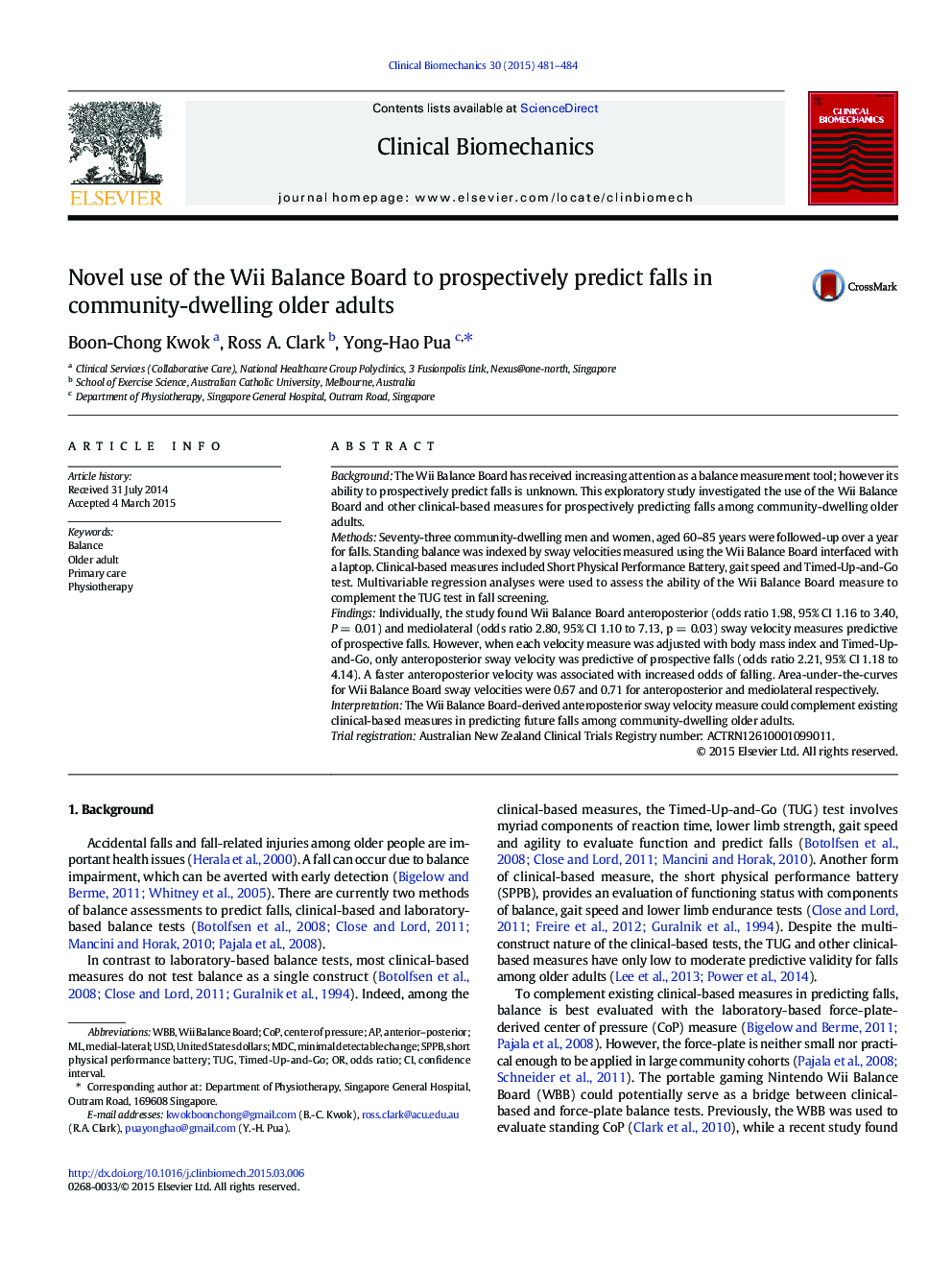| کد مقاله | کد نشریه | سال انتشار | مقاله انگلیسی | نسخه تمام متن |
|---|---|---|---|---|
| 6204798 | 1264918 | 2015 | 4 صفحه PDF | دانلود رایگان |

- The Wii Balance Board has received increasing attention as a balance measurement tool but its ability to predict falls in older adults is unknown.
- The Wii Balance Board-derived standing center-of-pressure velocity measures predicted falls but not the clinical-based balance measures.
- The Wii Balance Board-based anteroposterior center-of-pressure velocity measure could complement clinical-based measures to predict future falls.
BackgroundThe Wii Balance Board has received increasing attention as a balance measurement tool; however its ability to prospectively predict falls is unknown. This exploratory study investigated the use of the Wii Balance Board and other clinical-based measures for prospectively predicting falls among community-dwelling older adults.MethodsSeventy-three community-dwelling men and women, aged 60-85 years were followed-up over a year for falls. Standing balance was indexed by sway velocities measured using the Wii Balance Board interfaced with a laptop. Clinical-based measures included Short Physical Performance Battery, gait speed and Timed-Up-and-Go test. Multivariable regression analyses were used to assess the ability of the Wii Balance Board measure to complement the TUG test in fall screening.FindingsIndividually, the study found Wii Balance Board anteroposterior (odds ratio 1.98, 95% CI 1.16 to 3.40, P = 0.01) and mediolateral (odds ratio 2.80, 95% CI 1.10 to 7.13, p = 0.03) sway velocity measures predictive of prospective falls. However, when each velocity measure was adjusted with body mass index and Timed-Up-and-Go, only anteroposterior sway velocity was predictive of prospective falls (odds ratio 2.21, 95% CI 1.18 to 4.14). A faster anteroposterior velocity was associated with increased odds of falling. Area-under-the-curves for Wii Balance Board sway velocities were 0.67 and 0.71 for anteroposterior and mediolateral respectively.InterpretationThe Wii Balance Board-derived anteroposterior sway velocity measure could complement existing clinical-based measures in predicting future falls among community-dwelling older adults.Trial registrationAustralian New Zealand Clinical Trials Registry number: ACTRN12610001099011.
Journal: Clinical Biomechanics - Volume 30, Issue 5, June 2015, Pages 481-484